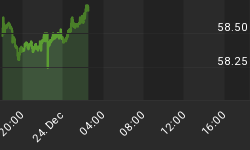Last Friday we covered one of the two "Most Important Questions" you should ask about today's market. As promised, we will discuss the Second Most Important Question today.
The Question is: What is the most Important key to the Stock Market?
The answer is: "The Net amount of Inflowing Liquidity".
Background: What is "Inflowing Liquidity" and what is the definition of "Net Amount"?
Inflowing Liquidity is the amount of money flowing into or out of the Stock Market on a daily basis. The "Net Amount" is the remaining amount after the selling activity for each day. If the Net Amount is positive, then the market had an excess of inflowing money even after all the selling. If the Net Amount is negative, then there was not enough to cover all the selling that day.
We quantify four levels of Inflowing Liquidity. Two levels (Quadrants 1 and 2) are in Expansion Territory, and two levels are (Quadrants 3 and 4) are in Contraction Territory.
Here are the 4 possible conditions for Inflowing Liquidity:
-
In Expansion Territory with Inflowing Liquidity in an up trend. (This is exhibited as increasing Net Liquidity levels on a daily basis which represents a net increase in daily Buying.) This is a market-up condition.
-
In Expansion Territory with Inflowing Liquidity in a down trend. (This is exhibited as decreasing Net Liquidity levels on a daily basis which represents a net increase in Selling.) This is a time of profit taking, consolidation, or a pull back in the market ... it could develop into an Inflowing Liquidity down trend that leads to a correction.
-
In Contraction Territory with Inflowing Liquidity in a down trend. (This is where increasing amounts of Selling occurs, and where the daily amounts of Inflowing Liquidity decrease more and more as time goes on. It is also where the VIX rises, and panic Selling happens. This is a market-down condition.
-
In Contraction Territory with Inflowing Liquidity in an up trend. (This is Increased Buying while there is still a net daily out-flow of money. Here is where early buying starts to occur even while the market is still correcting. It is only after the Inflowing Liquidity rises to a higher Quadrant level, and where a Liquidity resistance line is broken to the upside, where enough new Buying is occurring for a reversal back to an up trend to be established.)
- Credit has to be given to Jesse Livermore, a trader during the early 1900's. His main tenet was simple: "Markets go up when money flows in, and Markets go down when money flows out." From his trading profits, he bought a series of fully staffed mansions around the world, a fleet of limousines, and a yacht.
An important FYI: Inflowing and Outflowing Liquidity is more important today than it was just a few years ago. Why? Because even experienced technicians are being tricked by the negative divergences that they see. They used to work like magic in the old days, BUT now, negative Divergences do NOT kick in until after Inflowing Liquidity starts to down trend. The Liquidity down trending is a key, because as long as the market sees net positive Inflowing Liquidity coming in, negative divergences cannot result in a market down move.
Where can one find this kind of information?
Due to the importance of this information, we post the data in these chart Sections for our subscribers each day: The charts showing the daily Inflowing Liquidity amounts and trending can be found in StockTiming.com Standard Subscriber - Section 4 as Charts 8-1 and 8-2.















